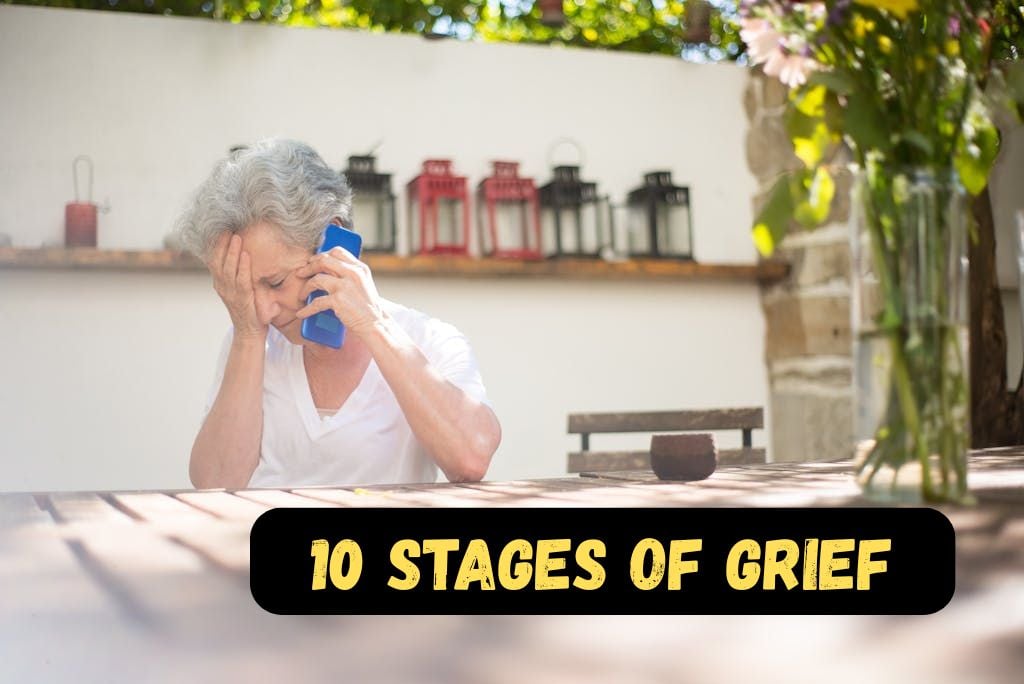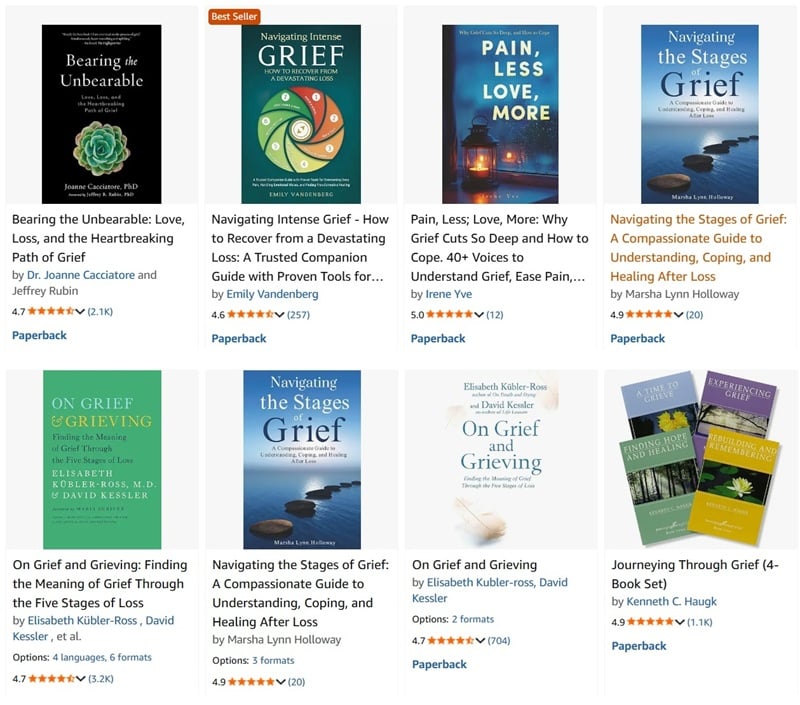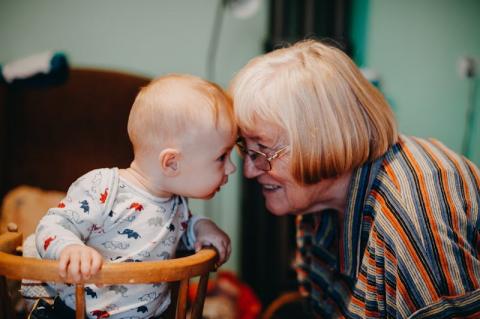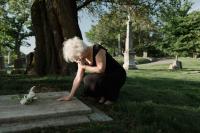Losing someone you love is one of life’s most difficult experiences. If you are reading this, you may be looking for comfort or clarity during a painful time.
Many people find it helpful to understand the 10 stages of grief, as these stages can offer a roadmap through the complex emotions that follow a loss.
This article is written especially for seniors, using simple language and a caring tone to help you feel less alone on your journey.
What Are the 10 Stages of Grief?
The idea of grief stages began with psychiatrist Elisabeth Kübler-Ross, who originally described five stages: denial, anger, bargaining, depression, and acceptance. Over time, therapists and researchers expanded this model to better reflect the full range of emotions people experience.

The 10 stages of grief include those original five, plus additional phases that many seniors recognize from their own lives:
1. Shock
This is the initial reaction right after a loss, especially if it was sudden. You might feel numb, disoriented, or as if you’re watching a scene from outside your body. It’s your mind’s way of protecting you from being overwhelmed all at once.
2. Denial
In this stage, you may find yourself thinking, “This can’t be real” or expecting your loved one to walk through the door. Denial helps you pace your grief, giving you time to absorb the reality of the loss bit by bit.
3. Pain and Guilt
As the truth sets in, intense sadness often follows. You might also replay past conversations, wishing you had said or done things differently. Guilt is common, even when there’s no real reason for it.
4. Anger
Grief can feel unfair, and anger is a natural response. You might feel angry at the world, at doctors, at God, or even at the person who died for leaving you. This anger is not a sign of disrespect, it’s part of healing.
5. Bargaining
During this stage, you may catch yourself thinking, “If only I had…” or “What if I’d done something sooner?” Bargaining is your mind’s attempt to regain control or undo the loss, even though you know it’s not possible.
6. Depression
This is a deep, quiet sadness that can make daily life feel heavy. You might withdraw from others, lose interest in activities, or feel exhausted. Unlike clinical depression, grief-related sadness often comes in waves and slowly eases over time.
7. Upward Turn
You start to have moments of calm or even small joys, like enjoying a cup of tea or laughing at a memory. These moments don’t mean you’ve “gotten over” your loss, but they show that healing is beginning.
8. Reconstruction
Here, you begin to rebuild your life. You might adjust routines, handle practical matters like paperwork, or find new ways to spend your time. This stage is about learning to live in a world without your loved one physically present.
9. Acceptance
Acceptance does not mean you’re “okay” with the loss. Instead, it means you understand that this new reality is permanent, and you’re learning to carry your grief while still moving forward.
10. Hope
In this final stage, you start to look toward the future again. You may find meaning in your experience, reconnect with loved ones, or rediscover purpose. The pain doesn’t vanish, but it becomes part of your story, not the whole story.
These stages are not a strict checklist. You might move back and forth between them, skip some, or experience them in a different order. That is completely normal.
Why Understanding Grief Matters for Seniors
As we age, we often face multiple losses; spouses, siblings, close friends, or even our own health. Each loss brings its own wave of sorrow.

Knowing about the 10 stages of grief can help you recognize that your feelings are valid and shared by many others. It can also reduce the fear that something is “wrong” with you for feeling sad, angry, or confused long after a loved one has passed.
Read Also:
Grief does not follow a schedule. Some days may feel manageable, while others bring tears without warning. That is part of the process. There is no “right” amount of time to grieve. What matters most is giving yourself kindness and patience.
Healthy Ways to Move Through Grief
While grief cannot be rushed, there are gentle ways to support yourself:

- Talk to someone you trust. Sharing memories or feelings with a friend, family member, or counselor can bring relief.
- Write in a journal. Putting your thoughts on paper can help you process emotions.
- Join a support group. Many senior centers and churches offer grief groups where you can connect with others who understand.
- Take care of your body. Eat regularly, rest when needed, and try light walks if you’re able. Physical health supports emotional healing.
- Honor your loved one. Light a candle, visit a special place, or create a small memory box. These acts can bring comfort.
Remember, seeking help is a sign of strength, not weakness. If grief feels overwhelming or lasts without any relief for many months, speaking with a doctor or therapist can make a real difference.
You Are Not Alone
Millions of people have walked this path before you, and millions will walk it after. The 10 stages of grief are not meant to box your feelings into categories but to remind you that what you are going through is human, natural, and shared. Even in deep sorrow, there is room for healing. Even in loss, love remains.
As you move through your own journey, be gentle with yourself. Some days will be harder than others, and that is okay. With time, support, and self-compassion, peace can return quietly, gently, and in its own time.
Read Also:
If you remember one thing, let it be this: understanding the 10 stages of grief can help you feel less lost, more understood, and never alone.












